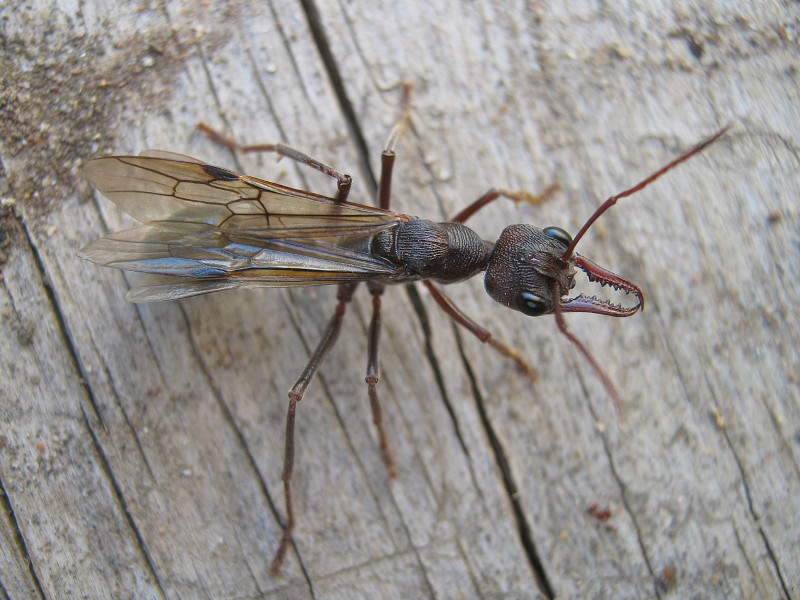Bulldog Ant Facts
- Firstly, Bulldog Ant serves as the collective name applied to a genus of roughly 90 species of ants, inhabiting various parts of the world.
- This rather fascinating genus derives its name from its reputation for aggressiveness and unparalleled instinctive tenacity.
- This occurs partly due to the fact that if this insect gets torn in half, the head and body survive for up to 30 minutes.
- Furthermore, during this time, the two halves of the insect will automatically engage in battle, literally fighting with itself.
- Finally, during this battle, the head will grasp the rear half with its pincers, while the rear half repeatedly stings the head fiercely.
Related Articles
Bulldog Ant Physical Description
Since the term Bulldog Ant applies to numerous separate species within a single genus, physical appearance naturally varies somewhat.
However, certain physical characteristics do remain consistent between the different types of ant known by this common name.
Firstly, individuals of the various representative species range in size from as small as 0.6 in (1.5 cm) to as large as 1.6 in (4.1 cm) in length.
For the majority of the genus, coloring remains rather variable. However, this most commonly consists of combined shades of red and black.
- Kingdom: Animalia
- Phylum: Euarthropoda
- Class: Insecta
- Order: Hymenoptera
- Family: Formicidae
- Genus: Myrmecia
Bulldog Ant Distribution, Habitat, and Ecology
Perhaps most notably, all but one species of Bulldog Ant evolved as endemic to Australia. The lone exception, however, evolved as native to New Caledonia.
Also, given that the genus includes so many species, habitat preferences quite naturally vary, sometimes significantly.
However, in terms of nesting choices, most of these invertebrates prefer to construct a nest in either soil rotten wood, or even under larger rocks.
In addition, the adult Bulldog Ant feeds on a variety of sources but primarily consumes honeydew, fruit, seeds, gums, fungi, and nectar.
The larvae remain entirely carnivorous, however. Most notably, these eat small insects that the adult workers bring to them in the colony.
Throughout Australia, the Bulldog Ant also remains well-known both for its extreme aggressiveness and the results of its quite powerful sting.
Finally, this insect remains one of the few known species of ants which has female workers. These are capable of reproduction if the queen should be killed.
Species Sharing Its Range
Check out our other articles on 5 Beautiful Birds of Venezuela, Mono Lake, Scottish Wildcat, Mary River Turtle, Phallus Indusiatus, Eastern Yellowjacket, Spiny Butterfly Ray, Rose’s Ghost Frog

